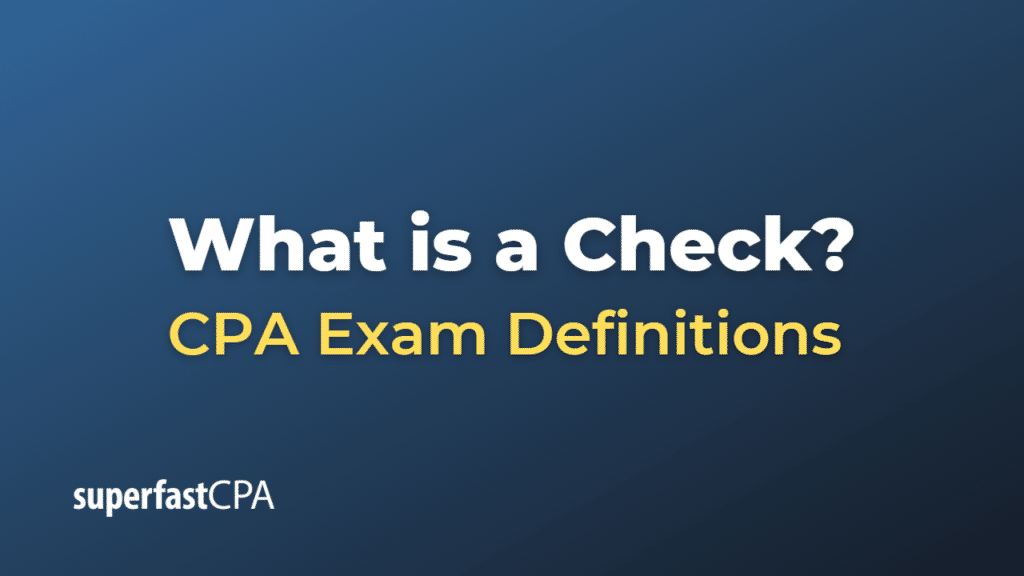Check
A check (also spelled cheque in some countries) is a financial instrument, a written document that orders a bank or credit union to pay a specified amount of money from the account of the person or entity who issued the check (the drawer) to the person or entity whose name is written on the check (the payee). Checks are a widely accepted form of payment and a traditional method of transferring money between bank accounts.
The essential components of a check include:
- The drawer’s information: The name, address, and sometimes contact information of the person or entity issuing the check.
- The payee’s information: The name of the person or entity to whom the check is payable. If the payee’s name is not specified, the check is considered a “bearer” check, which means it can be cashed by anyone who presents it to the bank.
- The check number: A unique number assigned to each check, which helps track and manage financial transactions.
- The date: The date the check was written. Depending on the jurisdiction, checks may have an expiration date, after which they cannot be cashed.
- The amount of money: The amount to be paid, usually written in both words and numbers to avoid ambiguity or alteration.
- The name of the drawer’s bank: The financial institution where the drawer’s account is held.
- The account number: The drawer’s account number at the bank, which is used to identify the source of funds.
- The routing number: A nine-digit number that identifies the bank or credit union where the drawer’s account is held, used for processing the check.
- The drawer’s signature: The drawer’s signature, which authorizes the payment and confirms the validity of the check.
Checks are subject to various regulations and processing procedures depending on the country and the financial institutions involved. When a payee deposits or cashes a check, the payee’s bank sends the check to the drawer’s bank for payment. The drawer’s bank verifies the check’s authenticity, confirms the availability of funds, and transfers the money to the payee’s account. If there are insufficient funds in the drawer’s account or the check is found to be fraudulent, the check may be returned unpaid, resulting in fees and potential legal consequences for the parties involved.
Example of a Check
Let’s consider a scenario where John wants to pay his friend Jane $500 for a used laptop she sold to him. John decides to use a check as the form of payment. Here’s how John would write the check:
- The drawer’s information: At the top left corner of the check, John’s name, address, and sometimes contact information are pre-printed.
- The payee’s information: On the line labeled “Pay to the order of,” John writes “Jane Smith” (the payee).
- The check number: In the top right corner, a pre-printed check number (e.g., 1025) appears.
- The date: John writes the current date (e.g., “May 1, 2023”) on the line labeled “Date” in the top right corner.
- The amount of money: John writes the amount in numbers as “$500.00” in the small box on the right side of the check. He also writes the amount in words as “Five hundred and 00/100” on the line below the payee’s name.
- The name of the drawer’s bank: The name of John’s bank, such as “Bank of Example,” is pre-printed on the check.
- The account number: John’s account number at the bank is pre-printed at the bottom of the check.
- The routing number: A nine-digit number, which identifies John’s bank, is pre-printed at the bottom left corner of the check.
- The drawer’s signature: John signs the check at the bottom right corner on the line labeled “Signature” to authorize the payment.
After receiving the check, Jane can deposit it into her bank account or cash it at her bank or John’s bank. The banks will then process the check, verifying its authenticity and transferring the funds from John’s account to Jane’s account.













